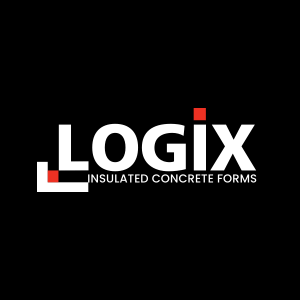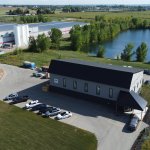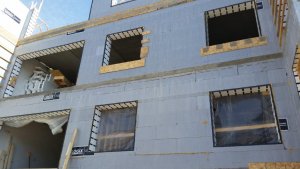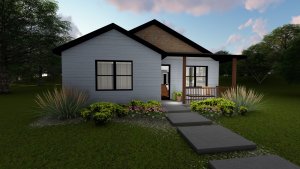The past year’s been quite the rollercoaster for lumber prices. Trading at about $0.28 per board foot in the first month of the COVID-19 pandemic, lumber tripled in price by September of 2020, coming in at roughly $1 per board foot. That wasn’t the end of the ride — after briefly dipping only 2 short months later, the cost per board foot then soared once again to the $1.40 it is at the time of writing. After a 400% jump in a single year, where lumber prices will go from now is anyone’s guess.
Building With ICF and Concrete Reduces Financial Risk and Uncertainty
As a builder, you’re used to uncertainties — that’s why you always aim to include a healthy contingency in your projects’ budgets. That said, it is a very risky proposition to “guesstimate” your costs for framing — a scope that can make up to 18% of the total construction costs, according to the National Association of Home Builders (NAHB).
Sadly, if you’re building with lumber today, there’s no way to safely estimate the material costs for framing accurately.
On the other hand, concrete and ICF prices have seen far fewer fluctuations since March of 2020. This, despite the ongoing public health crisis, a wild election cycle, unprecedented financial relief packages, and economic conditions the likes of which we haven’t seen in generations.
This level of price stability means predictable construction costs, reduced risk, and a higher probability of meeting your projected expenditures.
By choosing ICF instead of lumber, you can retain control over a midrise building’s project costs even if the design cycle stretches out to 2 or more years (1+ years for single-family homes).
If you were to choose lumber, you’d subject your project to unnecessary risk, as the costs of wood could change drastically, wreaking havoc on your budget and financing arrangements.
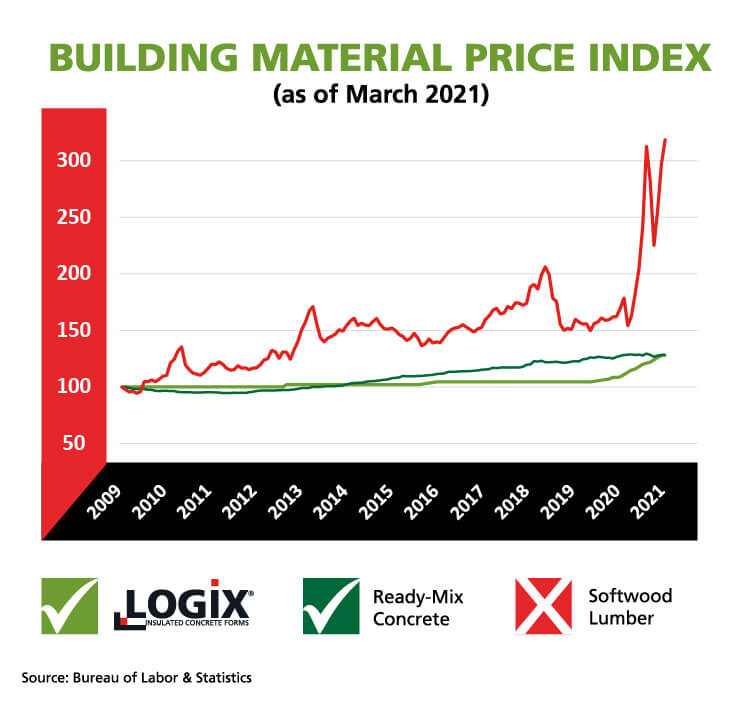
Don't miss a thing!
Subscribe for the latest in the ICF world, exclusive content, insider industry news and limited edition webcasts.
One Thing Is Now Certain About Lumber Prices — They’re Now on Par With the Costs of ICF Construction
It’s cheaper cost was the only edge that lumber ever had over ICF. Now that it’s gone, these numerous advantages of ICF homes come at almost no premium to the home or building owner:
- Energy efficiency — ICF homes are airtight, have a high thermal mass, and their walls are free of thermal bridging. Thanks to these attributes, ICF homes keep warm indoor air from exfiltrating, retain heat longer when temperatures outdoor temperatures fall and block heat transfer through structural components.
- Disaster resilience — ICF homes have proven resistance against the many natural disasters that plague North America, including earthquakes, wildfires, floods, and tornadoes.
- Comfort — their airtight walls prevent cold drafts and block moisture ingress.
As a builder, you can now offer your buyers all these benefits for the price of a standard wood-frame dwelling while at the same time reducing your own risk of financial exposure to due the volatility of lumber prices.
ICF Can Also Streamline the Construction Process
That’s because ICF construction has far fewer moving parts than the traditional, stick-built wood-frame method. When you use a product like Logix ICF, each ICF block gives you 6 distinct building components:
- Concrete
- Reinforcement
- Insulation
- Air barrier
- Vapor barrier
- Furring strips
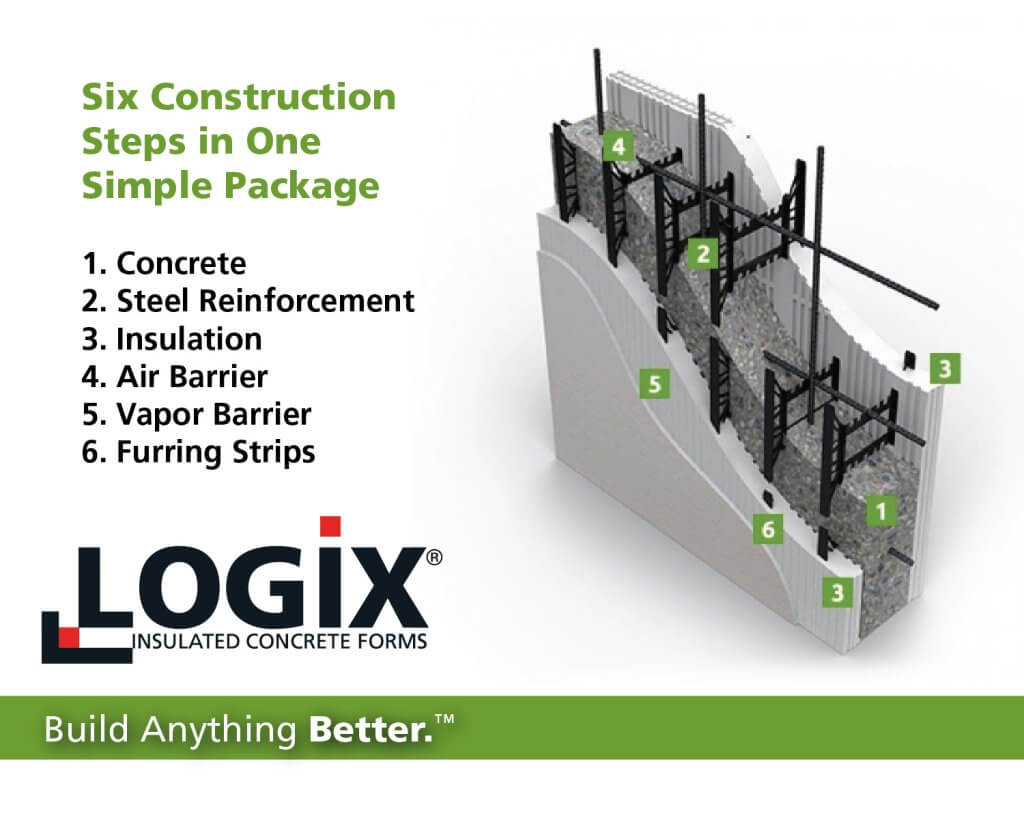
Not only do you not need to order these elements individually, but you also require fewer trades to get the job done.
Your framing crew, for instance, could quickly build an ICF basement and foundation on their own. In fact, building with ICF lets you have up to 50% less skilled labor as a percentage of your crew!
These efficiencies translate into a more streamlined construction process, fewer conflicts, and less potential for scheduling delays.
Being the “ICF Shell Specialist” Is a Profitable New Niche in the Cottage Industry
In a new trend, some ICF contractors now focus only on building the ICF shell: footings, slab, foundation, exterior walls, floors, roof, and openings, all of which can be built with a single crew.
In this case, everything else — from interior finishes to landscaping — rests with others (usually the owner-builder acting as the GC).
Many ICF shell specialists enjoy avoiding the headaches of dealing with multiple subcontractors, change orders, and substitution requests, and it’s a stellar way to insulate yourself from risk.
Wrapping It Up
The construction industry may be living through uncertain times, but one thing has definitely become clear: concrete and ICF are your best bet if you want to avoid the risk and uncertainty of price fluctuations.
What’s more, these materials no longer command a premium over the lower-performing lumber. This means that you can finally build comfortable, energy-efficient, durable homes without paying more.
